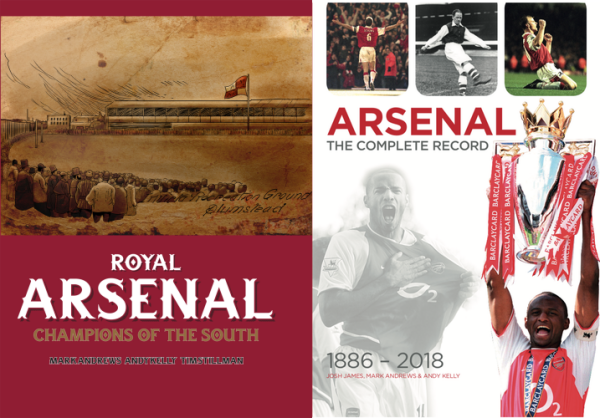…in 1925
Leslie Knighton (Arsenal manager 1919-1925), in what turned out to be his final season at Arsenal, tried to give his charges an extra pep in the shape of doped pills for the FA Cup tie against West Ham United in January 1925.
He admitted to this action 23 years later in his entertaining autobiography “Behind the Scenes in Big Football”, and of interest to us is the chapter “I Dope Arsenal For A Cup Tie” as it refers to these series of matches against the East Londoners.
![]()
Knighton claimed he was approached by an Arsenal supporting West End doctor just after the FA Cup draw was made. This mysterious doctor proceeded to recommend the players take a “courage pill” to give them more chance against The Hammers. Knighton took what appears to be a large batch of the pills from the ‘medicine man’.
This was the biggest London tie of the first round as, among other things, West Ham had reached Wembley two seasons earlier, only to fall at the last hurdle to the boot of future Arsenal forward David Jack in the white horse final.
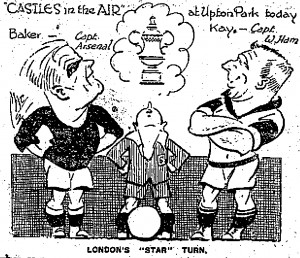
London’s Big Cup Game as seen by the Daily Express
Here is a list of each of the games in the tie and how his plans failed to work out.
Saturday 10th January
It was reported that no one could see to the other side of pitch at the Boleyn Ground and, on a generally foggy day all over much of the country though particularly London, West Ham versus Arsenal was rather surprisingly the only tie postponed.
The referee called it off as soon as he arrived at 2:35pm and the West Ham management did not bother to open the ground gates, as his decision had become obvious to all but the unfortunate Knighton. Upon arriving at Upton Park he took the pills out of his red box and both himself and all the players took them an hour before the kick-off but as the fog closed in the game was called off.

This was symptomatic of his reign: an idea, however flawed, to improve the team but poorly executed!
Monday 12th January
Arsenal travelled to Upton Park on Monday to try again but the fog and Knighton’s bad timing ensured the pills combined to torment the players with a raging thirst just like two days earlier. There was virtually no one outside the ground to hear the referee’s decision announced just prior to the scheduled kick off of 2:30pm, so dense was the fog.
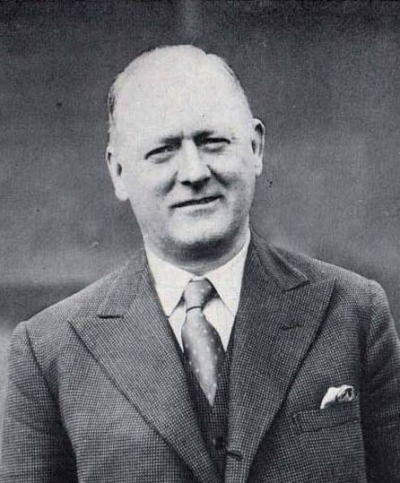
Leslie Knighton
Wednesday 14th January
At Upton Park the ground was in a shocking state owing to the recent effects of freezing fog, frost and the persistent drizzle all afternoon which turned all but the edges of the pitch into a quagmire. However, the game finally took place and, according to Knighton, Arsenal were “supercharged” despite the 0-0 scoreline.
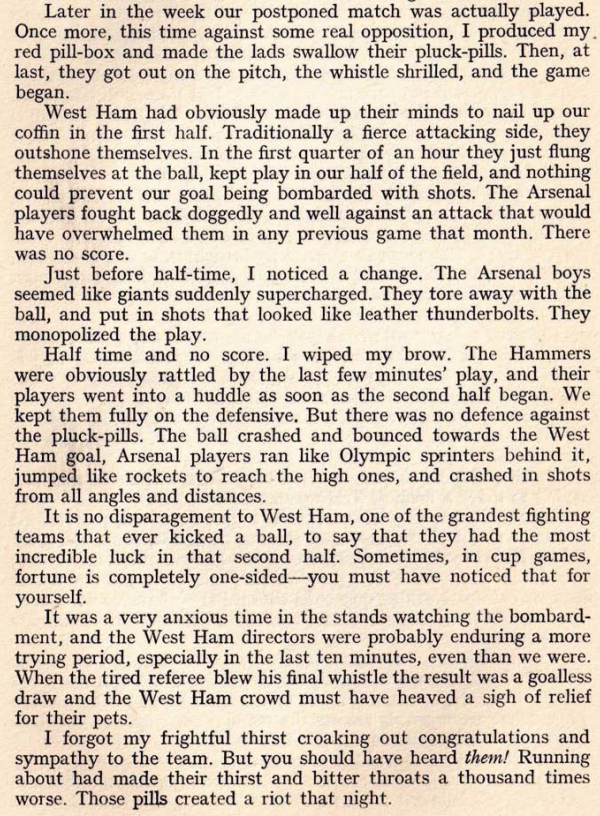
On the way to this game from Bexleyheath, a coach full of Gunners’ fans had a collision with a lorry in the Blackwall Tunnel. Thankfully only one supporter, Harry Wisdom, was injured and he was attended to at Poplar Hospital before being released.
Wednesday 21st January.
The replay at Highbury match kicked off at 2:15pm and was drawn 2-2 with a couple of goals by Brain for the Gunners, the second coming only three minutes from the end of extra-time to save the tie. Knighton had earlier faced a riot as the players who had up to now imbibed three sets of pills refused another doping session. Knighton noted himself that the side-effects: hyper-activity with a raging thirst were not easy to deal with, and was not greatly surprised at the resistance to his plans.
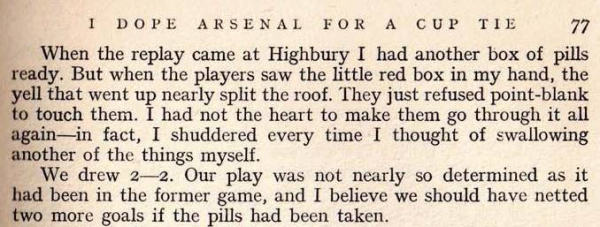
The attrition within this game led to Billy Milne, Jack Butler, Alf Baker, and Harry Woods all being injured. All four missed the next league game but only Milne was a long term injury with a splintered bone in his right leg, and the other three appeared in the third match of the tie. Milne was not back in the team until early April 1925.
Owing to the longevity of the tie, the players who had been selected for the South in the international trial at Stamford Bridge were excused by the FA and allowed to play for their clubs on 21st January.
Billy Henderson at right back and Vic Watson at centre forward for West Ham, and Sid Hoar at right wing for Arsenal were replaced for the trial game. Tom Parker of Southampton, the future Arsenal captain, was brought into the South team for Henderson as a consequence of the FA decision.
Monday 26th January
The second replay was played at Stamford Bridge. West Ham won a place in the next round at Nottingham Forest with the last kick of the game by their captain, George Kay. The Arsenal players had again refused to take the pills before the match.
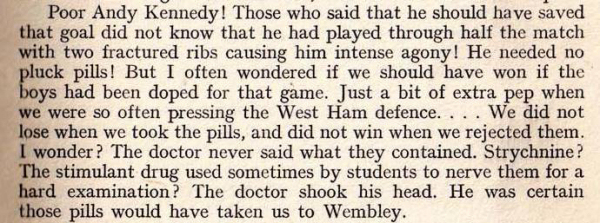
Andrew Kennedy had been barged out the way by Kay for the goal but had in the 15th minute picked up the rib injury which hampered him during the rest of this match and saw him miss action for the next month.
Kennedy’s place was taken by Alex Mackie who is subject to a bizarre history myth of his own. Somehow over the years his eccentric penchant for keeping a pet monkey has been conflated quite unaccountably into stating that he asked Norris to buy him a monkey as a signing on present! This is untrue. In Knighton’s book it is simply noted that Mackie himself had purchased the monkey with his first pay packet, no one else being involved.
The 1-0 loss saw the end of any realistic chance of a trophy for the Gunners. These cup games came within a run of six straight league defeats, but the team recovered and while they finished third from bottom of the top division they easily avoided relegation by seven points. However, that was not enough to save Knighton and he was shown the door in May 1925 after six fruitless seasons in charge.
The second round was played on 31 January. As Arsenal had no game, they took part in a friendly with Chelsea in an experimental game that trialled a change to the offside rule. But that is another story for another time.
Around the time of this FA Cup marathon negotiations for the purchase of Highbury were being undertaken by Norris and Hall with their Church landlords, with completion expected around the end of that season. Initially in 1913 the club agreed a 21 year lease on the playing field of St John’s College of Divinity, at £20,000 per annum. Norris and Hall spent £125,000 on upgrading the ground before purchasing the ten-acre site outright for £64,000 by June 1925.
Consequently as well as a greater financial stability by the start of the next season, Sir Henry Norris had also brought in Herbert Chapman, and a new era at the club was to begin.
Knighton is, to many, a footnote in the Gunners’ history, but had his and the “doctor friend’s” pill plan worked and the FA Cup been won by Arsenal in 1925 how different would our history be?
—————–
Don’t forget to subscribe to the blog (top right). You know it makes sense.
Or have a look at our other site: The Arsenal Collection for more Arsenal memorabilia.
Copies of our books Royal Arsenal – Champions of the South and Arsenal: The Complete Record 1886-2018 are still available from the publishers.
